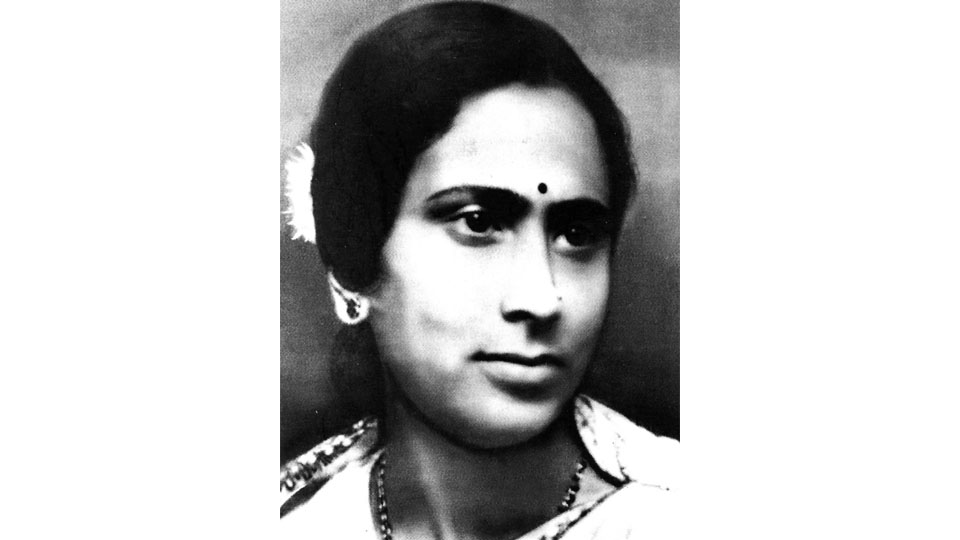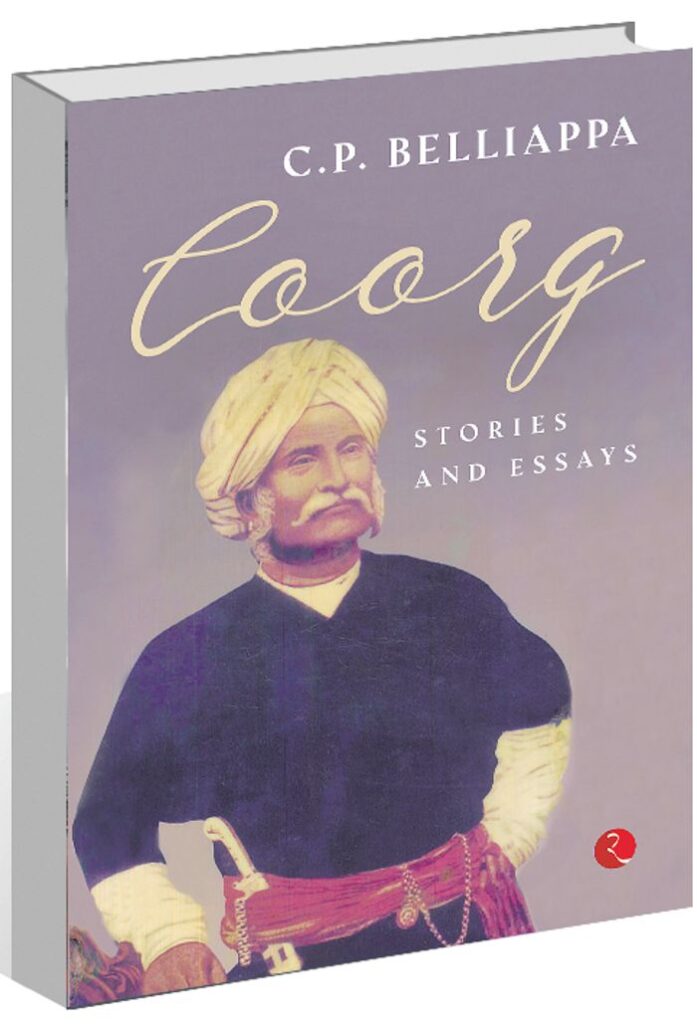
A well-known short story writer, leading feminist and freedom fighter, who met her tragic end at the young age of 27 .
Ramaiah couple in Madikeri, Kodagu, welcomed their youngest girl child Gowramma, on 5th March 1912 (not to be mistaken with Victoria Gowramma of Coorg, who was born in 1841). The little bundle of joy immediately became the family favourite, what with elder sisters too playing mother to the baby.
Pampered by the family, Gowramma soon displayed a mind of her own and would not stop until she got what she demanded. What was striking was her intelligence. She surprised everyone with her precocious self-confidence, which in her adult life led to Gowramma emerging as a well-known short story writer with strong emphasis on feminine issues.
When Gowramma was six years old, her parents decided to make the arduous pilgrimage to Kashi. Arrangements were made for Gowramma to stay with her sisters since the journey to Kashi and back would take more than a month. When Gowramma got wind of her parent’s plan, she threw a massive tantrum. She insisted on being taken to Kashi. All the cajoling failed and her doting father had to relent.
However, this pilgrimage turned out to be a huge tragedy. Gowramma’s mother, Nanjakka, took ill during the train journey and by the time they reached Kashi she was critical. There was very little Ramaiah could do and within days, his wife died. Grief-stricken Ramaiah performed the last rites on the banks of the Ganges.
He now had the sole responsibility of looking after Gowramma who did not grasp the full import of the event. Ramaiah took the little girl for shanti pujas at various temples. In the hustle and bustle of Kashi, Gowramma got separated from her father. Ramaiah was despondent searching for the little girl.
The sun was about to set and as a last resort, Ramaiah located the Police Station to seek their help. When he stepped into the Police Station, he was aghast to find Gowramma seated on the table chatting with the Constables. Relieved, he took her to Kashi Viswanath Temple to thank the Lord.
Several months passed before Ramaiah could come to terms with the tragedy. It was time for him to start planning Gowramma’s education. When Ramaiah mentioned a government school, Gowramma vehemently insisted on being admitted to the elite St. Joseph’s Convent in Madikeri.
Ramaiah, as a vakil, had good earnings and he agreed to Gowramma’s preference. Once in school, Gowramma blossomed. As her education progressed, she became increasingly inquisitive and bombarded her teachers and elders with queries.
However, society functioned differently. By the time Gowramma was 12 years old, her father and the rest of the family started looking for a suitable groom. They identified a young man named G.T. Gopalakrishna. She still had another year to complete her matriculation. While accepting the man chosen for her, Gowramma told her father that she would move to her future husband’s home only after completing matriculation. Knowing how recalcitrant she could be, Ramaiah accepted her decision.
Gowramma’s wedding at young age of 13
Thirteen-year-old Gowramma tied the knot with Gopalakrishna in 1925 and moved to Sunticoppa where Gopalakrishna worked as a manager in the estate of a prominent and progressive coffee planter — Gundukutti Manjunathayya.
They had comfortable accommodation in the plantation and had access to several facilities including a tennis court and a natural swimming pool in the stream that flowed through the coffee estate. Gowramma took to playing tennis and learnt swimming much to the consternation of members of her conservative family.
The Navodaya Movement in Kannada literature was at its peak at the time. The movement initiated around the 1900s by B.M. Srikantaiah (BM Sri) encouraged original thoughts in Kannada literature and motivated writers to integrate the essence of English literature in exposing social evils in society.
This renaissance in Kannada literature gave Karnataka brilliant litterateurs such as Shivram Karanth, Da. Ra. Bendre, Panje Mangesh Rao, Kuvempu, D.V. Gundappa, Masti Venkatesha Iyengar and many others. Gowramma immersed herself in reading books, short stories, poetry and essays by these eminent writers.
Gowramma felt strongly about women getting raw deals at every level of society. She was troubled by the fact that women were not protesting, rather, were helpless, in the blatant patriarchy, discrimination, caste rigidity, and atrocities against them.
What bothered her the most was the plight of widows. She questioned child marriage, the dowry system, denying widow remarriage and treating them as outcastes; and lack of education for girls.
Gowramma’s very first short story written in 1931, when she was nineteen years old, was titled ‘Punarvivaha’ (Remarriage). It’s a powerful story about a 35-year-old widower wanting to marry an attractive 15-year-old girl not knowing the girl was a child widow. When the girl reveals this to him, he is angry and disgusted.
After a long dialogue, she holds up the mirror to the man of the double standards in society. Finally, ashamed of himself he falls at the feet of the young widow and dedicates his life fighting misogyny in society.
In another story ‘Aparadi Yaru?’ (Who is Guilty?), Gowramma portrays the sad story of a young widow with a child who is excommunicated and is helpless and destitute. She had no recourse but to convert to another faith. In some of her stories, young widows, betrayed women, jilted lovers and abandoned women are driven to extreme despair and suicide.
There are also stories by Gowramma, such as ‘Paapana Maduve’, ‘Kausalanandana’, ‘Sanyasi Ratna’, that are playful and have happy endings.
Mahatma Gandhi in Kodagu and freedom movement
Gowramma was an ardent admirer of Gandhiji and actively supported the freedom movement. During a brief sojourn of Mahatma Gandhi in Kodagu in 1934, Manjunathayya drove the Mahatma in his car to various places in Kodagu. Gandhiji visited Manjunathayya’s estate for a break and met leading freedom fighters.
Many women in Kodagu came forward to donate their jewellery to Gandhiji towards his charitable deeds. Gowramma decided to part with all her jewellery but wanted Gandhiji to personally visit her house. However, she was told to meet the Mahatma at Manjunathayya’s residence. Gowramma vehemently insisted Gandhiji visit her humble abode and went on a hunger strike!
When Gandhiji heard about this he sent word for Gowramma to first come to Manjunathayya’s bungalow to break her fast and promised to visit her house.
Gowramma received an orange from Gandhiji who then accompanied her to her home. Gowramma gave away all her valuables except for her mangalsutra, earrings and nose stud. Gandhiji was most touched by this noble gesture.
By 1939, Gowramma had written 21 short stories, and these were published in periodicals such as ‘Prajamatha’, ‘Jaya Karnataka’, ‘Rastrabhandu’ and ‘Jayantha’. Her writings were well-received by the public and were appreciated by well-known writers of the time such as Da.Ra. Bendre, Shivram Karanth, D.V. Gundappa, Muliya Thimmappaya et al.
Interaction with eminent writers
Gundukutti Manjunathayya’s estate attracted these eminent writers, and this allowed Gowramma to interact with them. Gowramma received support and encouragement from contemporary feminist writers such as Nanjangudu Tirumalamba and R. Kalyanamma.
Da. Ra. Bendre mentored Gowramma and advised her to publish an anthology of her stories. Gowramma selected 12 of her stories and titled the book ‘Chiguru’ (tender shoot). She requested Bendre to write a foreword for the collection, which he readily agreed.
A month before the manuscript was to be sent to the publishers, Gowramma, for reasons unknown, changed the title of the book from ‘Chiguru’ to ‘Kambani’ (tears). Bendre was intrigued and was to make a few changes in his foreword.
It was a salubrious sunny day on April 13, 1939. Gowramma, her husband Gopalakrishna and a nephew were to accompany Manjunathayya for a swim in the stream. Gopalakrishna had urgent work and was to join them later. Gowramma walked to the stream where Manjunathayya and her nephew were already in the water.
As usual, she climbed onto a branch overhanging the stream and dived into the deep end of the natural pool. When Gowramma did not resurface, Manjunathayya and her nephew were concerned and raised an alarm. Estate workers rushed to the spot to help but to no avail.
Divers retrieve her body later in the day. It was the most tragic day for her husband and eight-year-old son Vasanthrao, as well as the world of Kannada literature.
The literary world lost one of its most promising writers. Bendre, who used to refer to Gowramma as ‘nanna thangi Gowramma’ was heartbroken. He not only wrote a touching foreword for ‘Kambani’ but also penned a tearful poem eulogising Gowramma. She has left a lasting legacy as a writer, a leading feminist and a freedom fighter.
An English translation by Deepa Bhasthi, of Gowramma’s 21 stories, titled ‘Fate’s Game and Other Stories’ has been published recently.
I am thankful to Advocate S.R. Jagadeesh, a grand nephew of Gowramma, for sharing details of Gowramma’s life and for gifting her biography ‘Kodagina Gowramma’ by H. Nagaveni.
source: http://www.starofmysore.com / Star of Mysore / Home> Feature Articles / by C.P. Belliappa / February 18th, 2024



